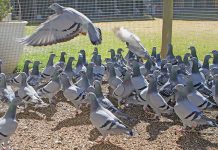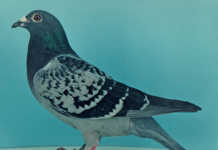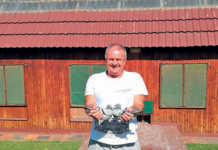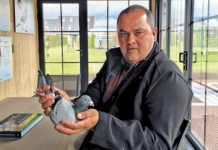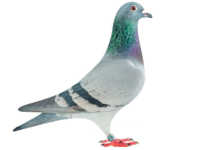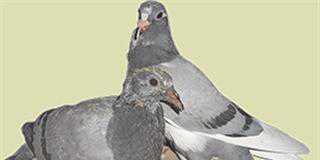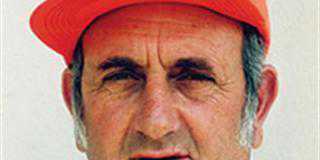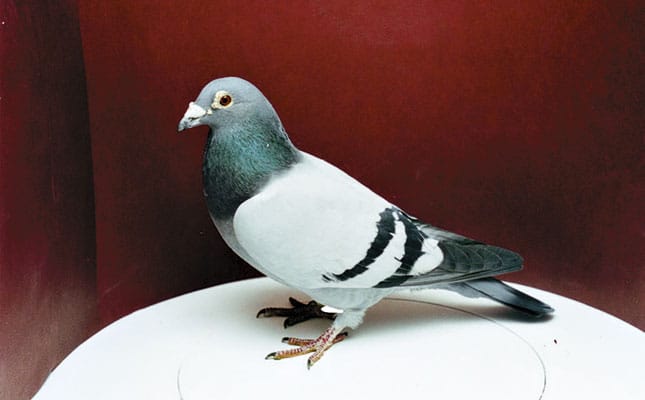
A slow-paced event would be won by a bird that has more speed even if the winning velocity was slow compared to the average, comfortable velocity. W e also credited the “winning factor” to guts, intelligence, superior heart muscles, an advanced metabolism, excellent health and better overall genetic and physical features. A pigeon that consistently scores at the top in strong competition is preferred over a bird that scores during a single event.
READ:Dealing with equine sarcoids
The components of speed
The components that influence speed are weight, thrust, drag and lift. Each interacts either negatively or positively to increase or decrease speed. None of these components stand as singular components of speed, but rather, together, as aspects of it. he efficiency of the ideal weight, thrust, drag and lift must also be seen against the influence of weather conditions during the entire course of a race event. It must also be seen against the maturity and completed development of a pigeon, and its experience.
Within the study of our definition, we will assume that the racing pigeons are in excellent health and well prepared for a race. It stands to reason that less weight means less gravity. But, this factor still depends largely on the broad influences that prevail during a race.
The fact is that during prolonged flight, the weight of a pigeon changes as its own muscle is burnt as protein fuel. he pigeon that weighs less would have an advantage at the start of a race, but would be disadvantaged once it has started to burn muscle. In addition, some pigeons may have eaten more than others just before a race and the undigested food would add to the weight. By measuring the weight one should not just look at the volume of muscle or the overall size of the pigeon, but also at the weight of its feathers, the bone structure and the body’s capacity to house efficient air sacs.
Thrust and drag are factors discussed together, because both are effected by the aerodynamics of the pigeon. An aerodynamic build would ensure the force of gravity is exacted at about 1/3 from the front of the sternum, or breastbone. That means that besides its weight, an ideally balanced body shape (amongst other factors) could compensate to counteract gravity.
In relation to its shape and size, a larger pigeon may weigh too little and a smaller pigeon may be too heavy. When an object is in motion, the air should pass over it with the least resistance. That’s why aircraft is designed with a streamlined shape – to allow air to pass over with ease.
A racing pigeon with the ideal body contours is described as pear-shaped. The pear-shaped body should not be too deep or too shallow and it should taper down gradually towards the tail attachment to allow for a narrow back and finishing off at the tail, which should look like one tail feather whilst in flight. The narrower the tail attachment, the less drag – the less deep keeled, the less the thrust. Lift is achieved with the undisturbed passing of air under the body during flight.
Lift has to do with a low resistance ratio of thrust to drag. The way the wing connects to the body should be in proportion to the body’s length, width and shape. hile in flight the air has to pass faster over the top of the wing to meet the airflow passing under the wing. That produces lift. The covering of feathers nearest to the body, on an extended wing, should knit to the body, or rest on the back in such a way as to keep the air pressure stable.
If the air escapes, lift would be affected and the bird would need to work harder to maintain it. If the wing tips are too broad and the primary feathers aren’t well-louvered, the airflow and general efficiency of flight would be disturbed. The flight feathers should slot well together during the down stroke, to use the air and they should open during the upward stroke, to allow air to pass through. Old feathers are shed every year during moulting, so that is not a good time to race pigeons.
Calculating speed
To determine speed, the flying time of a completed race event is calculated in minutes, which is divided into the distance flown. Unfortunately, this method does not provide for changes in the weather such as the wind blowing against the birds during 50% of the race and then turning into a tail wind for the latter part of the journey.
The average velocity common to races in Gauteng is between 1 250m/min and 1 350m/min. In places such as Upington and Limpopo, the average is below 1 200m/min. Poor visibility, heat and humidity affect speed on windless days. Inexperienced, young-bird races often produce an average speed of about 1 000m/min.
This article was originally published on 22 February 2008 in Farmer’s Weekly.


